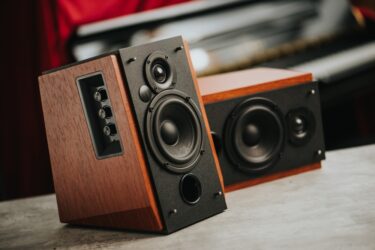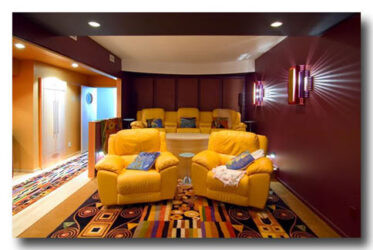How can one determine what is good quality leather when buying home theater seating? The varieties of cuts and grades are many. Different cuts impact the texture and the feel that one gets when using it. Different types will also age and wear in different ways.
Common terms to be aware of are top grain, full grain and bonded. Such terms reference the type and the condition of the cowhide being utilized.
Top Grain
This is the outermost part of the hide. Top grain also refers to the fact that the hide is not split. Splitting the hide ordinarily reduces its strength and durability. Split hides may be good for seat backs or sides, although they are not good for seat bottoms because they are prone to stretching when stressed. When this happens, the desired shape of the seat covering is compromised.
Full Grain
Full grain hides are those in which all natural markings remain. Grain will vary substantially, and this is actually a desirable quality, because it underscores the fact that the hide is genuine and only slightly processed. Because of the variations in full grain hides, home theater seating made with them should be examined so that preferred grain patterns can be identified.
The reality is that most seats are made with more heavily processed hides. These are buffed to subdue heavy grain patterns and imperfections. The result is a smoother, more uniform appearance. Some of this material is embossed with an artificial pattern to make it look very consistent.
All of these top grain and full grain materials are still good alternatives to various fabrics. They are far more dust-resistant, and this is an important quality for those with allergies. Most buyers also come to appreciate the ease with which this kind of home theater seating is cleaned.
Bonded Products

These products are largely synthetic in nature, although they may contain up to 20 percent leather cut-offs. These pieces are ground up and mixed in with the synthetic material. The result is a pleasing, textured look. The first wave of products made using this bonded seat covering material came to the market in 2007. Due to some quality concerns with this first-generation product, a second-generation, improved bonded product appeared 18 months later. Nonetheless, it important not to confuse this synthetic form of seat covering with genuine cowhide. Some people are fooled, and they may end up overpaying for the synthetic product.
The “real thing” remains popular in part because it gets better with age. That is, it wears beautifully. Over time, it will take on a softer feeling and a richer appearance. Real cowhide is a natural product that is better because it is not over-processed to be “perfect.” The genuine cowhide-covered theater chair will show scars and varied grain. The less processed the hide, the more that this will be true.
One final cautionary note should be mentioned. Cowhide is somewhat vulnerable to the deleterious effects of ultraviolet light, just like many other materials. Fading, cracking and excessive drying can occur. Therefore, it is advisable to use a conditioner that offers protection from ultraviolet light rays. Apply leather conditioner from time-to-time, and you’ll enjoy the rich, soft feel of the hide as it ages over time.






